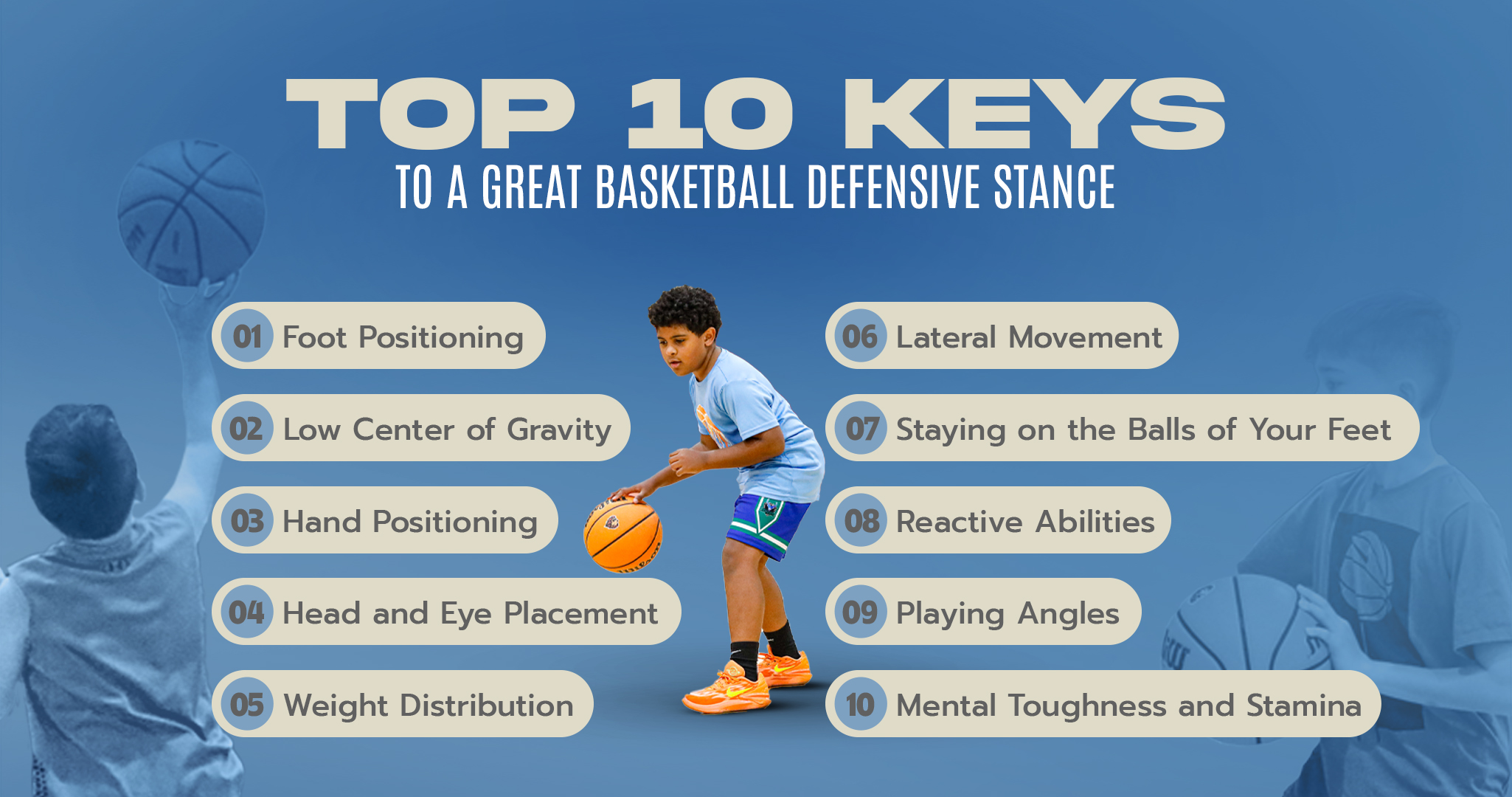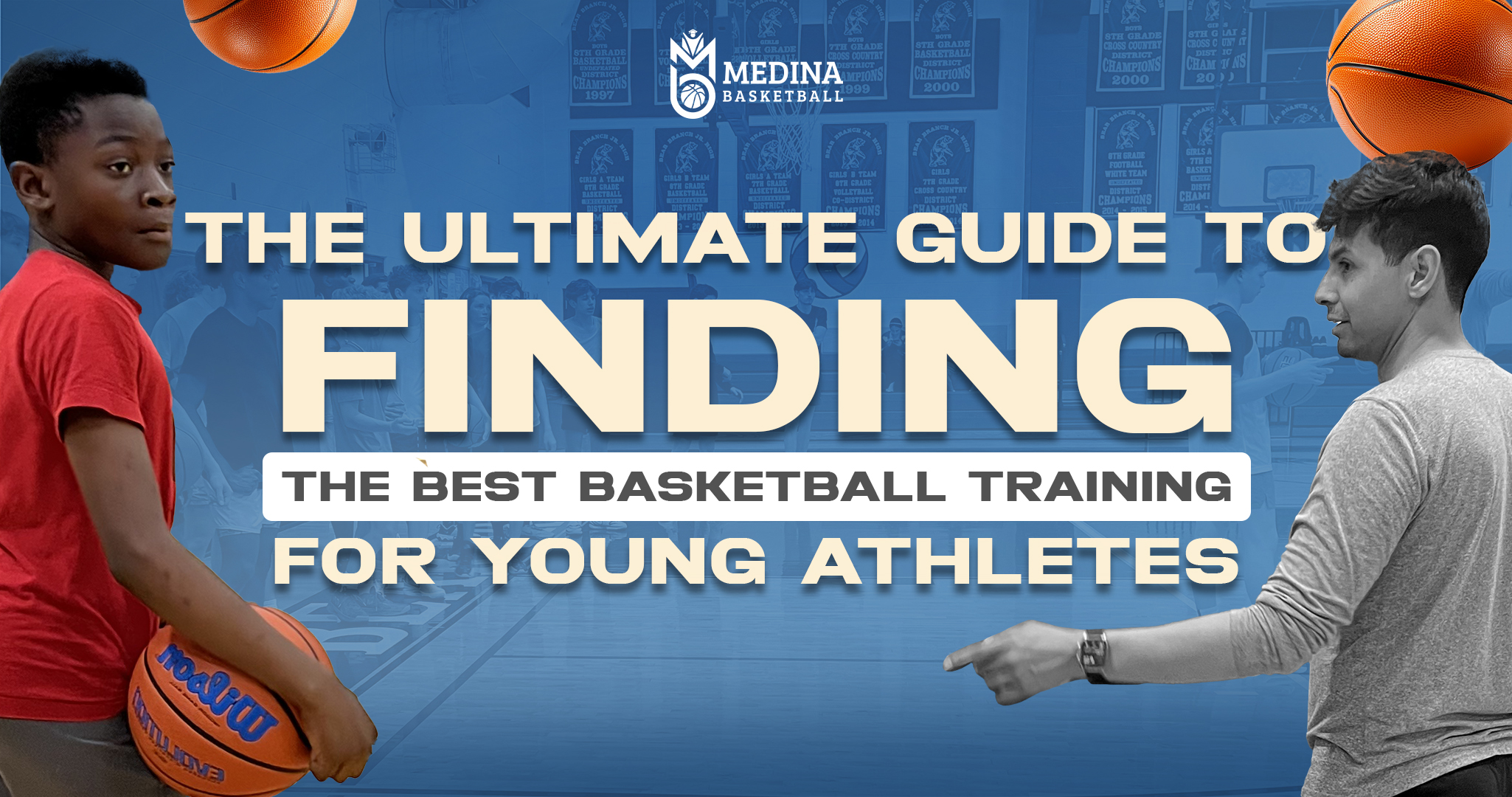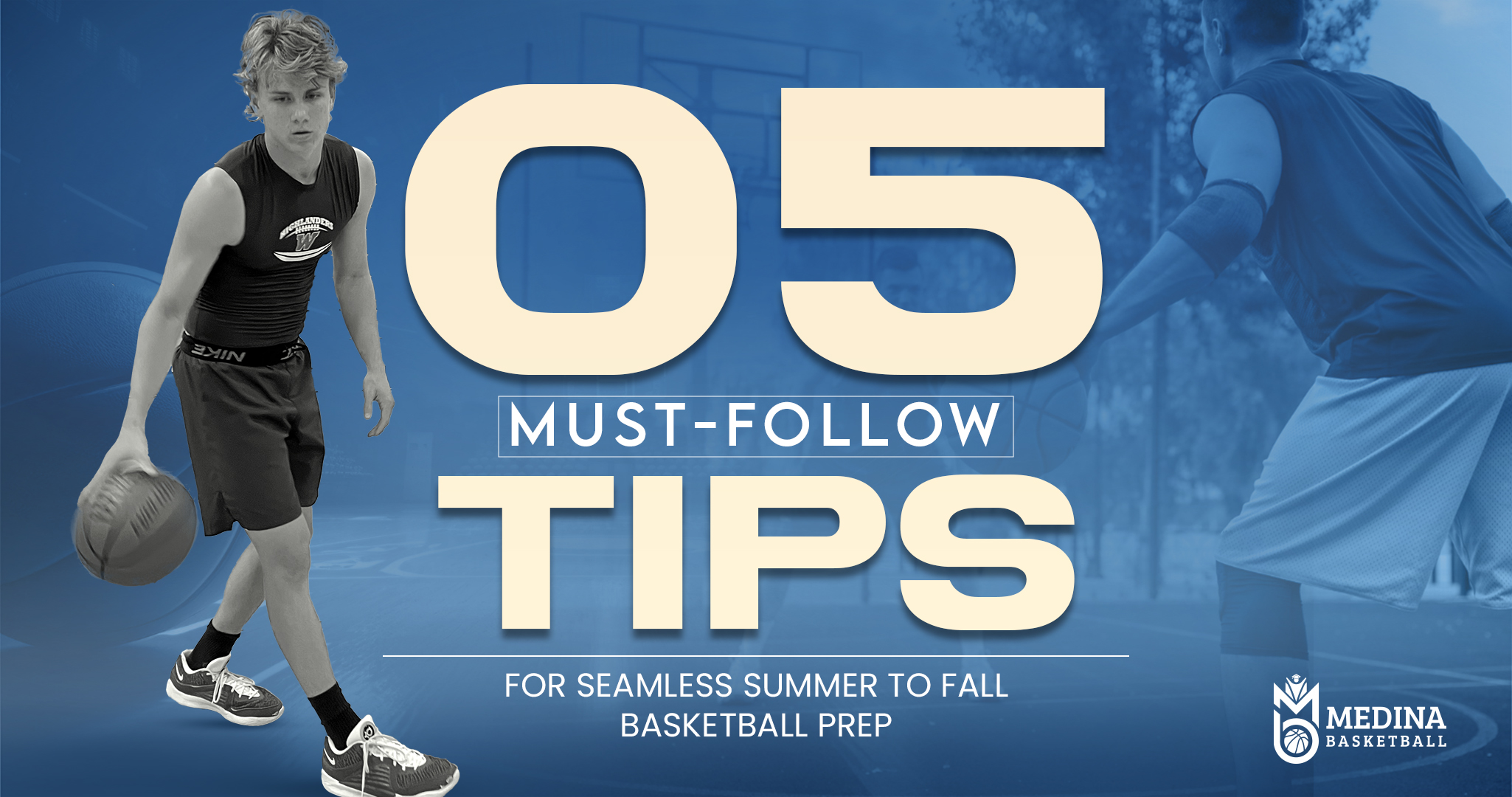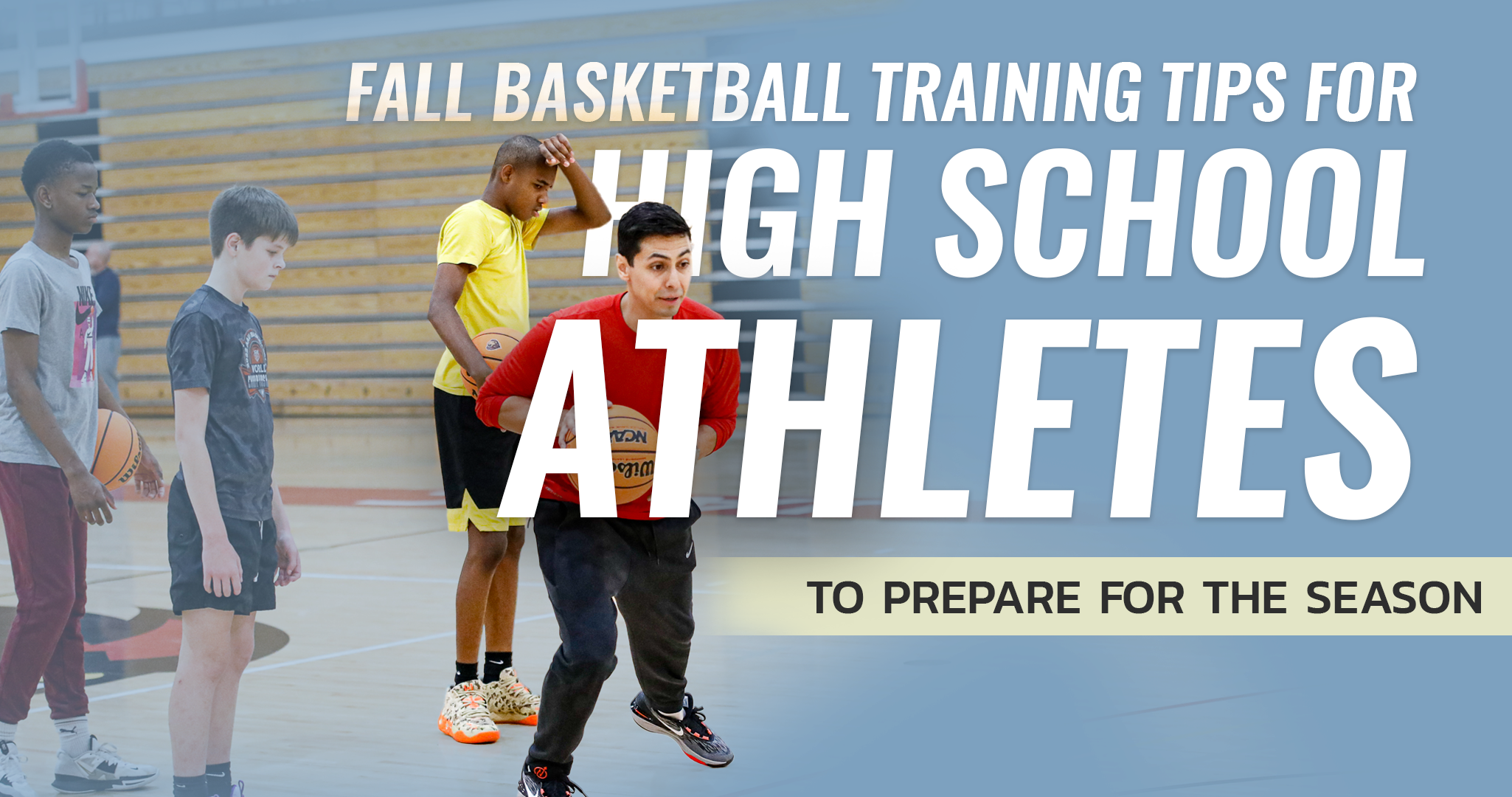Picture this: the buzzer sounds, the crowd roars, and you're on the court, ready to…

Imagine the electric anticipation vibrating through the gymnasium as a formidable offensive player dribbles the ball down the court. The crowd is holding its breath, eyes fixed on the inevitable showdown. Now picture yourself, standing firm between them and the basket—a sentinel in sneakers, about to showcase the art of defense.
In basketball, a game typically celebrated for its high-flying dunks and three-point swishes, the unsung heroes are often those who can anticipate, react, and thwart an opponent’s every move. Your ability to stand your ground, disrupt plays, and protect the painted area can shift the tides of a game and electrify the stands. And it all begins with your defensive stance.
Before we go any further, let’s get one thing straight: a great defensive stance is not just a fundamental aspect of basketball; it’s a statement. It says, “Not on my watch,” without uttering a single word. It’s the difference between being a mere hurdle and being a formidable obstacle in the path of your adversary. Whether you’re a rising rookie, a weekend warrior, or dreaming of professional courts, these keys will unlock a new level of defensive dominance and respect on the court.
What is Defensive Stance?
At the heart of basketball defense is the defensive stance—an athlete’s primary posture and position when guarding an opposing player. This is more than just crouching low and eyeing your counterpart; it’s a dynamic and strategic alignment of your body to maximize your defensive capabilities. The defensive stance encompasses the alignment of your feet, the bend in your knees, the spread of your arms, and the readiness of your mind. It’s a state of readiness, a coil of potential energy ready to spring into action. A well-executed defensive stance enables you to move rapidly in any direction, to react instantaneously, and to maintain both balance and control no matter how your opponent tries to break past.
The Role of a Defensive Stance in Basketball
Why prioritize a strong defensive stance? In the grand chessboard that is basketball, your stance is your opening gambit, your first line of defense, and your best deterrent. It’s crucial because it:
- Dictates how quickly and effectively you can move in response to an offensive player’s actions.
- Influences your ability to stay in front of the ball and guide your opponent’s choices on the court.
- Helps prevent reaching fouls by positioning your hands wisely.
- Reduces the likelihood of getting caught off-balance, which can lead to easy points for the other team.
- Sets the tone for physical and mental resilience, showing your opponent that you are an obstacle to be reckoned with.
A defensive stance is not merely a pose; it is an active engagement with the game. When adopted correctly, it transforms your approach, refining your reactions, enhancing your endurance, and sharpening your strategy. Remember, a great defender is not born in a moment of glory; a great defender is built stance by stance, game by game, through the relentless pursuit of perfection.
Key 1: Foot Positioning
The Importance of Balance: Balance is the cornerstone of defensive play. Picture the soles of your shoes as the foundation of a fortress. Just like a strong fortress withstands a siege, a player with good balance can counter any offensive onslaught. Balance enables you to maintain stability as you pivot, shift, and lunge. It’s what keeps you upright when an opponent attempts a sudden drive or an unexpected crossover.
How to Position Your Feet for Maximum Agility: Your feet are the pilots of your defensive craft; they direct your every move. For the best defensive stance, place your feet shoulder-width apart. This gap allows quick, explosive lateral and vertical movements without compromising balance. Angle your toes slightly outward —not too much, to avoid strain. Consider positioning your springboard to anywhere on the court, equipping you to dart in various directions as the game demands.
Key 2: Low Center of Gravity
Benefits of a Low Center of Gravity: When your center of gravity is low, you become a force the opponent must reckon with. This position enhances your stability, making it tougher for you to be knocked off-balance or kicked out of your shoes. It also primes your muscles for rapid, powerful reactions, allowing you to explode into motion the instant your opponent makes their move.
Techniques to Maintain a Low Stance Without Tiring Quickly: The secret to maintaining this power-packed stance is in your knees and hips. Bend your knees as if you’re about to sit on a chair, keeping your back straight but tilted ever so slightly forward. Engage your core and thigh muscles to share the workload, preventing early fatigue. Practicing squats and lunges can also help bolster your endurance in this position.
Key 3: Hand Positioning
Proper Placement of Hands and Arms: Your hands and arms are the extensions of your defensive wall. To be effective, keep your hands active and outstretched, mirroring the ball. Your arms should be bent at a relaxed angle, ready to swipe at the ball or deter a shot without committing a foul. Think of your arms as barriers—dynamic, flexible, and yet imposing.
Using Hands to Disrupt the Offensive Player’s Sight and Movement: Position your hands to obscure your opponent’s line of sight, obstruct passing lanes, and challenge shots. Use your arm length to create the illusion of a smaller opening, pressuring the offensive player into making mistakes or taking less favorable options.
Key 4: Head and Eye Placement
Keeping the Head Up: Keeping your head up is about more than just proper form—it’s about vision. With your head held high, you can survey the court, watch player movements, see screens developing, and remain integral to your team’s defensive structure.
Eye Positioning for Anticipating Plays: Your eyes should be focused on your opponent’s waist or chest area since these parts move the least and give away the direction of where the player will go. This helps in predicting and reacting to movement instead of falling for fakes.
Key 5: Weight Distribution
The Role of Weight Distribution in Quick Movements: In defense, how you shift your weight can make or break your ability to keep pace with the offense. Uneven weight distribution can slow you down and make you vulnerable to quick changes in direction.
How to Properly Distribute Weight on the Feet: You want your weight primarily on the balls of your feet but not so far forward that you can’t move backward swiftly. Like a sprinter in the blocks, your weight distribution should favor quick starts, stops, and direction changes.
Key 6: Lateral Movement
Techniques for Effective Side-to-Side Movement: Mastering lateral movement means being able to glide across the court, shadowing your opponent without crossing your feet. Practice shuffling drills to hone these skills—keeping your feet apart, not allowing your heels to touch, and using short, quick steps for efficient movement.
Drills to Improve Lateral Quickness: Speed ladder drills and cone drills that emphasize side-to-side movement can drastically improve your lateral quickness. Incorporating resistance bands or ankle weights during practice can also add to the effectiveness of your training.
Key 7: Staying on the Balls of Your Feet
Advantages of Staying on the Balls of Your Feet: Staying on the balls of your feet ensures that you’re always ready to burst into action. It’s like being a loaded spring, prepared to release energy in any direction at a moment’s notice.
Exercises to Build Calf Strength and Endurance: Strong calves are crucial for this aspect of your stance. Incorporate calf raises, jump rope routines, and plyometric exercises like box jumps into your training to build the necessary strength and endurance in your lower legs.
Key 8: Reactive Abilities
Developing the Ability to React Quickly to Offensive Moves: Reaction time is pivotal. Every millisecond counts when responding to a fake, jab step, or drive. Your ability to read the play as it unfolds and react accordingly can disrupt the offense’s rhythm.
Training Methods to Enhance Reaction Time: Use reaction drills that require you to start, stop, and change direction based on visual or audio cues. Partner-based drills, such as mirroring exercises, can also sharpen your responses.
Key 9: Playing Angles
Understanding the Concept of Angles in Defense: Navigating the geometry of the court is a subtle but profound aspect of defense. Playing effective angles can funnel an offensive player into help or toward a location where they are less effective, like driving a poor shooter toward the perimeter.
Positioning to Force Offensive Players into Less Advantageous Spots: Learn to position your body in a way that coerces your opponent away from their strengths. Force-right or force-left techniques based on scouting reports can be crucial in determining the outcome of a possession.
Key 10: Mental Toughness and Stamina
The Importance of Mental Resilience in Defense: Defensive play can be grueling and thankless, and the strongest muscle at your disposal is your mind. Mental fortitude will push you to maintain form and focus when your body is begging for a break.
Strategies for Maintaining Focus and Energy: Throughout the Game Developing a routine that includes mindfulness, visualization, and proper breathing can significantly enhance your mental game. Off-court, focus on conditioning and endurance-building workouts to help sustain the high energy defensive play requires.
Now that we’ve broken down the secrets to a great defensive stance, it’s time to put theory into practice. Take these keys, step onto the court, and electrify your defense. Remember, a great defense is about physical readiness and strategic intelligence—it’s where the gritty becomes great and the unnoticed becomes unforgettable.
Related: The Ultimate Guide to Free Throw Shooting
In conclusion, mastering the art of a great defensive stance in basketball isn’t about a single trick or a fleeting moment of brilliance – it’s a symphony of movements, each as important as the last, harmonizing to create an impenetrable force on the court. By embedding these ten keys into your defensive repertoire – from the nuanced positioning of your feet to the razor-sharp mental edge needed when fatigue sets in – you embrace the totality of what defense truly represents.
Remember, defense doesn’t just win games; it builds the backbone of championship legacies. As you continue to refine these skills, do so with the knowledge that each time you lock into that perfect stance, you’re not just preparing to defend a basket – you’re setting the stage for victory.
Now, take these keys, make them your own, and step onto the court with the confidence of a defender ready to shift the course of any game. Because when you get down to it, defense isn’t just part of the game; it is the game.
Stay ready, stay resilient, and make every stance count.



